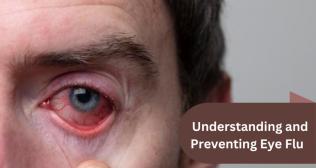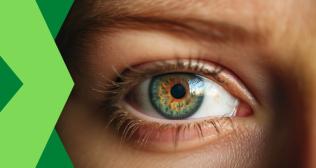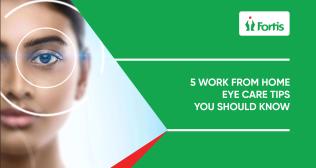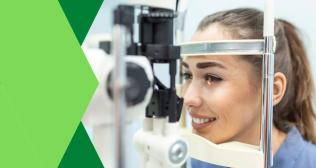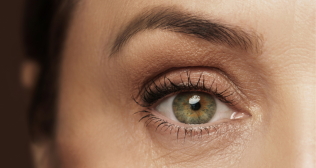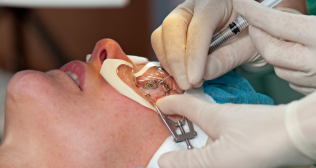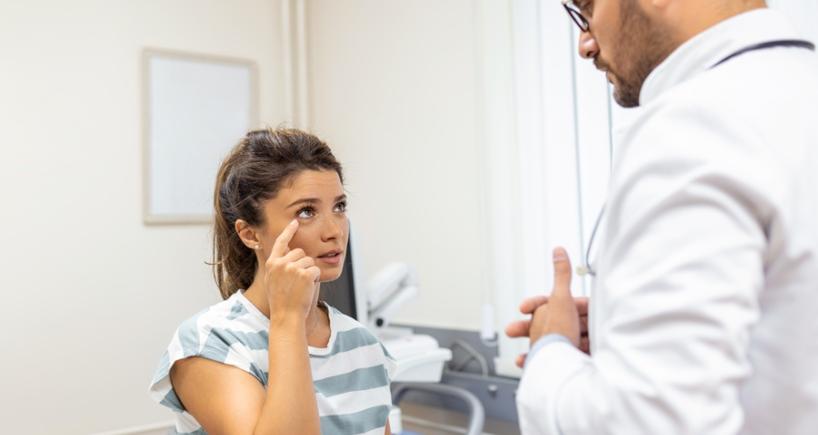
Pink Eye: Understanding the Causes, Symptoms, and Treatments
Introduction
Conjunctivitis is a prevalent condition that causes inflammation or redness in the conjunctiva — the clear tissue covering the white portion of the eye and the inside of the eyelids. Conjunctivitis is predominantly referred to as pink eye because it causes the white portion of the eye to turn pink or red.
Read on to learn more about the symptoms of the different types of pink eye, ways to treat pink eye, and what you can do at home to find some relief.
Signs and Symptoms
They may comprise:
- The feeling that something is in the eye, or a feeling of having sand in the eye.
- Eye redness
- Burning eyes – a stinging sensation in the eyes
- Eye discomfort or itching
- Painful eyes (this is typical with bacterial conjunctivitis)
- Watery eyes (epiphora)
- Unusually swollen eyelids
- Blurry or hazy vision
- Being too much light-sensitive
- Excess of mucus, pus, or thick yellow discharge from the eye. There can be so much discharge that eyelashes adhere together.
There are three major conjunctivitis types: Viral, bacterial, and allergic. However, irritants, such as foreign entities, chemicals, or pollutants, can also trigger conjunctivitis. Listed below are the signs and symptoms observed with each type of conjunctivitis:
Viral Conjunctivitis
It is the predominant type of conjunctivitis. This type of pink eye is highly contagious and usually disseminates through schools and other crowded places. Generally, the viruses responsible for inducing the symptoms of common cold also cause viral conjunctivitis.
Signs and symptoms of viral conjunctivitis comprise:
- Burning
- Redness of eyes with a watery discharge
- Fever
- Uneasiness
- Tiredness
- Enlarged lymph nodes
Bacterial Conjunctivitis
This type of conjunctivitis is also very contagious and arises after a bacterial infection. At certain times, the bacteria that cause pink eye resemble those that cause strep throat.
Signs and symptoms of bacterial conjunctivitis include:
- Red-eye (either unilateral [one side] or bilateral [affecting two or both sides])
- Discharge containing pus but may be thin or thick
- Discharge containing mucus, pus, or water
- Irritation, burning, stinging, discomfort
- Tearing
- Sensitivity to light
- Intolerance to contact lens
- Fluctuating or reduced vision
- Enlargement of conjunctival vessels induced by a variety of diseases
- Palpebral conjunctival papillary reaction
- Watery discharge
- Infection of the eyelids not spreading posterior to the orbital septum
- Conjunctival membranes
Allergic Conjunctivitis
This is a type of pink eye that comes from an allergic reaction to animals, pollen, the smoke of cigarette/tobacco, pool chloride, fumes released from cars, or something else in the environment. It is not contagious. The allergic pink eye makes eyes very itchy, red, and watery, and the eyelids may become swollen. Signs and symptoms of allergic conjunctivitis are as follows:
- Itching is the primary symptom where patients constantly rub their eyes with temporary relief.
- The conjunctiva and eyelids become diffusely hyperemic and edematous.
- Presentation is most often bilateral (two sides) due to the systemic nature of the disease.
Treatment of Pink Eye or Conjunctivitis
There is no straightforward treatment for viral infections. One must rely on an immune system to ward off viral conjunctivitis. It will usually take 7 or 14 days to go away. However, some steps can be taken to help with the process of recovery.
- Individuals with moderate level of bacterial conjunctivitis might feel better in two to five days, healing entirely within two weeks. But, in certain cases, the eye doctor may order antibiotic drops to help reduce the infection duration, the possibility of complications, and the risk of the disease spreading to other individuals. One may require antibiotic drops if they have discharge or if a compromised immune system cannot combat the infection on its own.
- Allergic conjunctivitis will improve by eliminating the cause of the problem. For instance, keeping away from pets if one is allergic to cats or dogs. An ophthalmologist or optometrist can order eye drops to relieve the symptoms. An over-the-counter antihistamine can also offer relief.
At-Home Care for Pink Eye or Conjunctivitis
An individual can take additional steps to alleviate the symptoms of viral and bacterial conjunctivitis.
- Over-the-counter lubricating eye drops can help treat eye inflammation and dryness.
- Preservative-free drops can be utilized as frequently as every hour to help cope with the itching and burning of the eyes and lessen the urge to rub them.
- A cool, moistened washcloth placed over the eyes can also soothe the eyes and loosen dried mucus or pus. Just be sure to utilize a clean washcloth each time to avoid spreading the infection.
- If required, ibuprofen or other nonsteroidal anti-inflammatory drugs (NSAIDs) can be utilized cautiously to offer pain relief and decrease inflammation. (Note: Topical NSAID drops should be avoided.)
- For allergic conjunctivitis, antihistamine medications (oral or eye drops) are the most effective method to relieve symptoms at home. Several allergy medications can now be purchased over the counter. Lubricating eye drops or a cool, moistened washcloth may also relieve watery, itchy eyes.
- There are also some don’t’s for at-home-care. Do not use redness-reducing drops, such as Visine or Clear Eyes. Such drops often contain a decongestant that reduces the swelling in the blood vessels of the eyes, but only temporarily. But, when an individual has an infection, redness-reducing drops may cause discomfort or worsen the manifestations.
- When utilizing artificial tears, those purchased in a bottle may consist of preservatives that can worsen symptoms if utilized more than four to six times in 24 hours.
- If utilizing lubricating tears, preservative-free choices are gentler on the eye and may aid more with symptom relief.
In case of persistent pink eye symptoms, contact medical professionals to avoid further complications.
Popular Searches :
Hospitals: Cancer Hospital in Delhi | Best Heart Hospital in Delhi | Hospital in Amritsar | Hospital in Ludhiana | Hospitals in Mohali | Hospital in Faridabad | Hospitals in Gurgaon | Best Hospital in Jaipur | Hospitals in Greater Noida | Hospitals in Noida | Best Kidney Hospital in Kolkata | Best Hospital in Kolkata | Hospitals in Rajajinagar Bangalore | Hospitals in Richmond Road Bangalore | Hospitals in Nagarbhavi Bangalore | Hospital in Kalyan West | Hospitals in Mulund | Best Hospital in India | Gastroenterologist in Jaipur | Cardiology Hospital in India
Doctors: Dr. Rana Patir | Dr. Rajesh Benny | Dr. Rahul Bhargava | Dr. Jayant Arora | Dr. Anoop Misra | Dr. Manu Tiwari | Dr. Praveer Agarwal | Dr. Arup Ratan Dutta | Dr. Meenakshi Ahuja | Dr. Anoop Jhurani | Dr. Shivaji Basu | Dr. Subhash Jangid | Dr. Atul Mathur | Dr. Gurinder Bedi | Dr. Monika Wadhawan | Dr. Debasis Datta | Dr. Shrinivas Narayan | Dr. Praveen Gupta | Dr. Nitin Jha | Dr. Raghu Nagaraj | Dr. Ashok Seth | Dr. Sandeep Vaishya | Dr. Atul Mishra | Dr. Z S Meharwal | Dr. Ajay Bhalla | Dr. Atul Kumar Mittal | Dr. Arvind Kumar Khurana | Dr. Narayan Hulse | Dr. Samir Parikh | Dr. Amit Javed | Dr. Narayan Banerjee | Dr. Bimlesh Dhar Pandey | Dr. Arghya Chattopadhyay | Dr. G.R. Vijay Kumar | Dr Ashok Gupta | Dr. Gourdas Choudhuri | Dr. Sushrut Singh | Dr. N.C. Krishnamani | Dr. Atampreet Singh | Dr. Vivek Jawali | Dr. Sanjeev Gulati | Dr. Amite Pankaj Aggarwal | Dr. Ajay Kaul | Dr. Sunita Varma | Dr. Manoj Kumar Goel | Dr. R Muralidharan | Dr. Sushmita Roychowdhury | Dr. T.S. MAHANT | Dr. UDIPTA RAY | Dr. Aparna Jaswal | Dr. Ravul Jindal | Dr. Savyasachi Saxena | Dr. Ajay Kumar Kriplani | Dr. Nitesh Rohatgi | Dr. Anupam Jindal |
Specialities: Heart Lung Transplant | Orthopedic | Cardiology Interventional | Obstetrics & Gynaecology | Onco Radiation | Neurosurgery |









